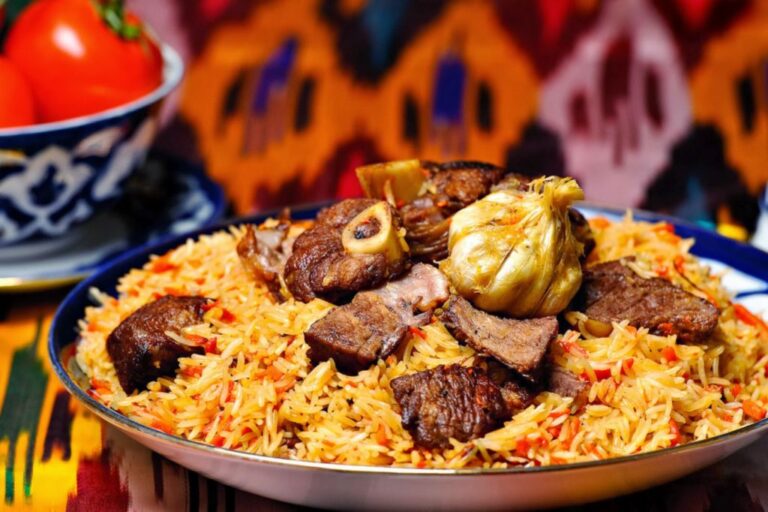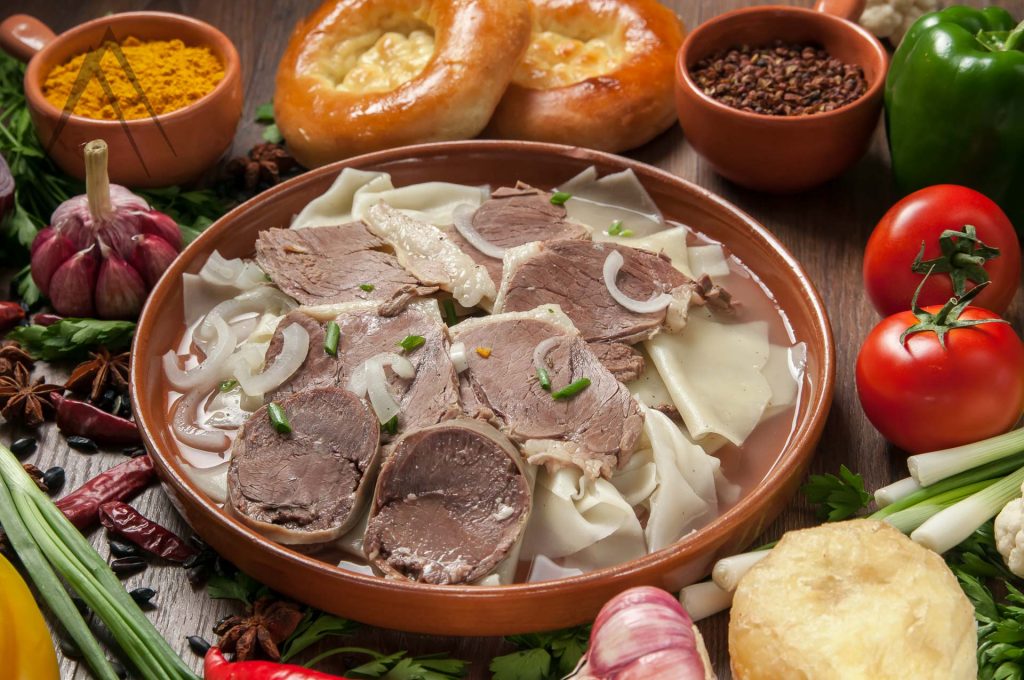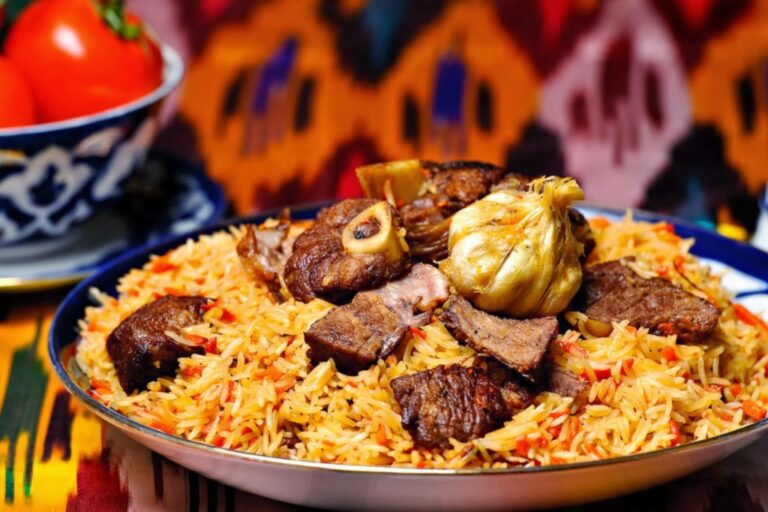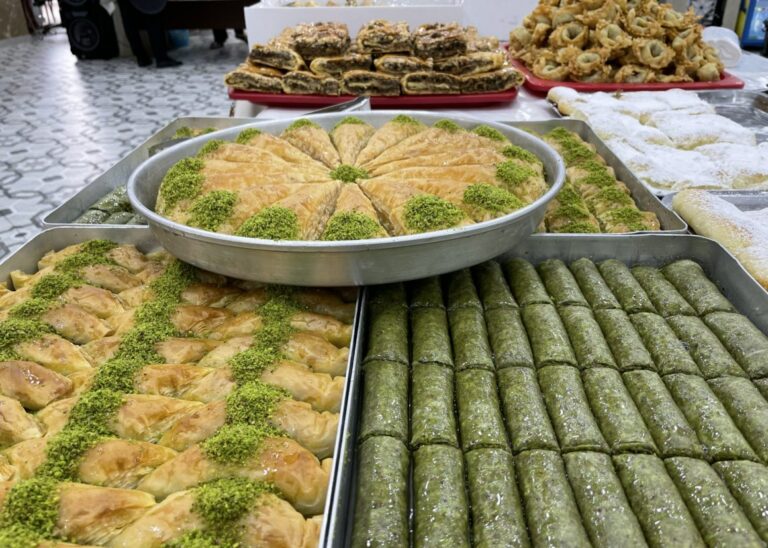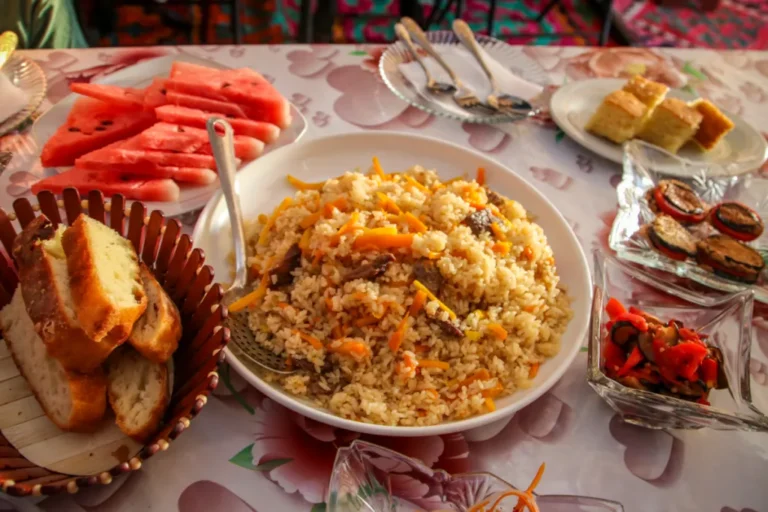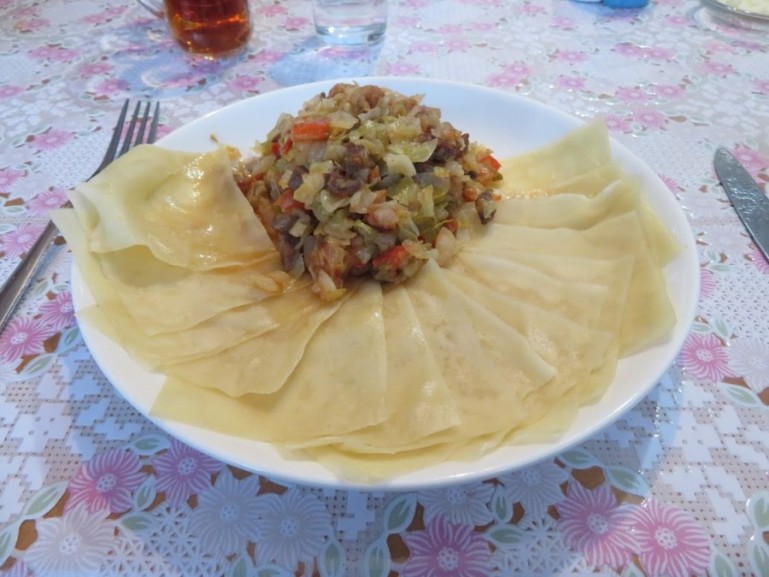Introduction: Kyrgyz Cuisine
Kyrgyz cuisine is a reflection of the country’s nomadic culture and rich history. Located in Central Asia, Kyrgyzstan has a cuisine that consists of meat-based dishes, dairy products, and a variety of grains and vegetables. The country’s cuisine has been influenced by several factors, including its geography, Islamic religion, and neighboring countries.
Islamic Influence on Kyrgyz Cuisine
The Islamic religion has played a significant role in shaping Kyrgyz cuisine, with dietary laws that prohibit the consumption of pork and the consumption of alcohol. As a result, Kyrgyz cuisine features a wide range of halal meat dishes, including lamb, beef, and chicken. In addition, Kyrgyz cuisine incorporates Islamic dietary practices such as fasting during the month of Ramadan.
Meat-Based Cuisine of Kyrgyzstan
Kyrgyz cuisine is mainly meat-based, with dishes like Beshbarmak, which is the national dish of Kyrgyzstan. It is a boiled meat dish served with noodles, onion, and sometimes potatoes. Other popular meat dishes include Kazy, a horse meat sausage, and Kuurdak, a dish made with lamb, potatoes, and onions. Kyrgyz cuisine also features grilled meat dishes, such as Shashlik, which is marinated meat grilled on skewers.
Dairy Products: Essential in Kyrgyz Cuisine
Dairy products also play an essential role in Kyrgyz cuisine. Kumis, a fermented mare’s milk, is a popular beverage in Kyrgyzstan. Kyrgyzstan is also known for its various dairy products like yogurt, curd, and cheese among others. Kurut, a dried yogurt ball, is a snack that is commonly consumed by Kyrgyz nomads.
Traditional Kyrgyz Cuisine at Festivals
Traditional Kyrgyz cuisine is an essential part of many festivals and celebrations in Kyrgyzstan. At weddings and other celebrations, a table is set up with various dishes, such as Beshbarmak, Plov, and various salads. Additionally, people often drink tea or Kumis, which is believed to have health benefits.
Modernization of Kyrgyz Cuisine: Health Concerns
With modernization comes a shift towards a more health-conscious diet. In response, Kyrgyz cuisine has started incorporating more vegetables and fruits into their dishes. Restaurants and cafes now offer healthier options such as salads and vegetarian dishes. Also, there is a growing movement towards organic farming, which has generated interest in using more locally grown, organic produce.
In conclusion, Kyrgyz cuisine is a reflection of the country’s nomadic culture and rich history. The cuisine has been influenced by several factors, including its geography, Islamic religion, and neighboring countries. Kyrgyz cuisine is mainly meat-based, with dairy products also playing an essential role. With modernization comes a shift towards a more health-conscious diet, and Kyrgyz cuisine is evolving to incorporate healthier options.

